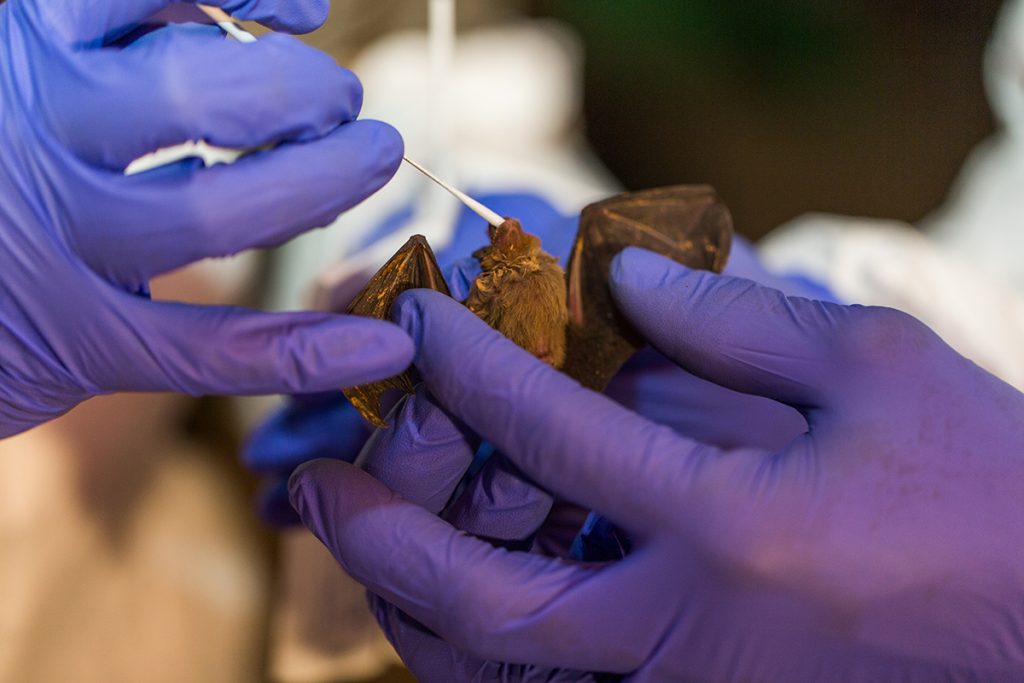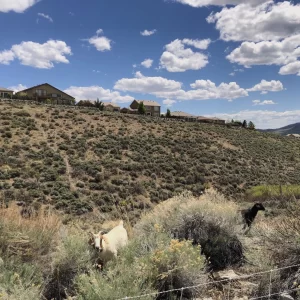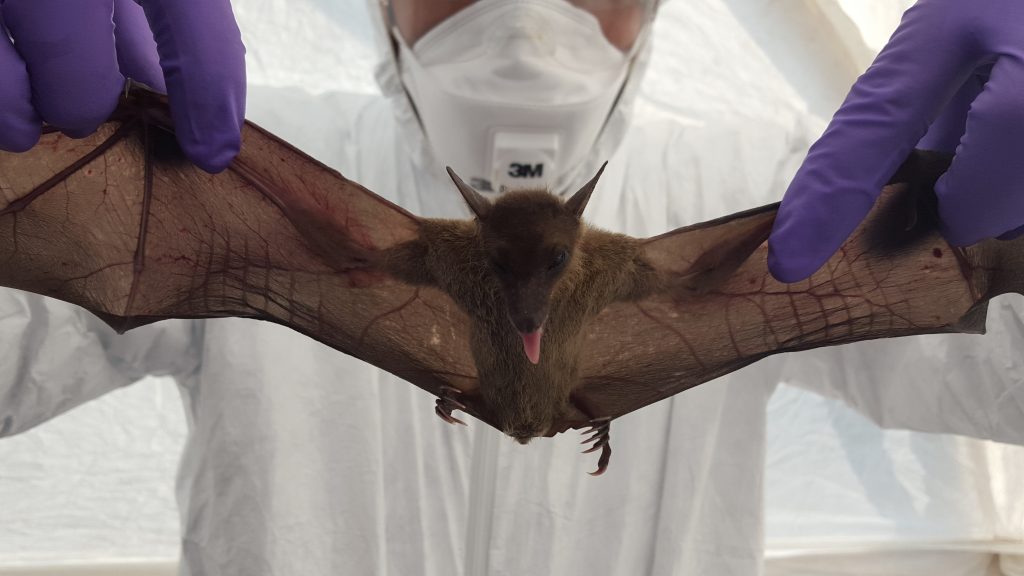
Online movie rentals of “Contagion” and fictional outbreak dramas have climbed up in recent weeks. Apparently many people trapped in their homes want to see fictionalized— and sometimes realistic— outbreaks while they wait out the COVID-19 pandemic.
It usually goes something like this: the valiant scientists trace the virus, figure out how it sheds from unsuspecting carriers and then they grow the virus in a lab. Ultimately, they create a vaccine, which is miraculously quickly able to be mass produced.
But back here, in real life, scientists have been quietly working on proactively finding these potentially dangerous viruses before they become a rampant outbreak.
Ten years ago, the United States Agency for International Development (USAID) funded a science investigation to identify and evaluate all kinds of animal viruses around the globe.
It’s called the PREDICT project. It’s a network of scientists and labs in more than 30 countries that has discovered nearly 1,000 novel viruses — those are viruses that haven’t been identified before.
“They were really thinking about what could happen– they were thinking about COVID-19 when they established that program, back 15 or so years ago. USAID really wanted to help countries improve preparedness and early recognition,” says Christine Kreuder Johnson, an epidemiologist at the University of California, Davis who co-directs the PREDICT program.
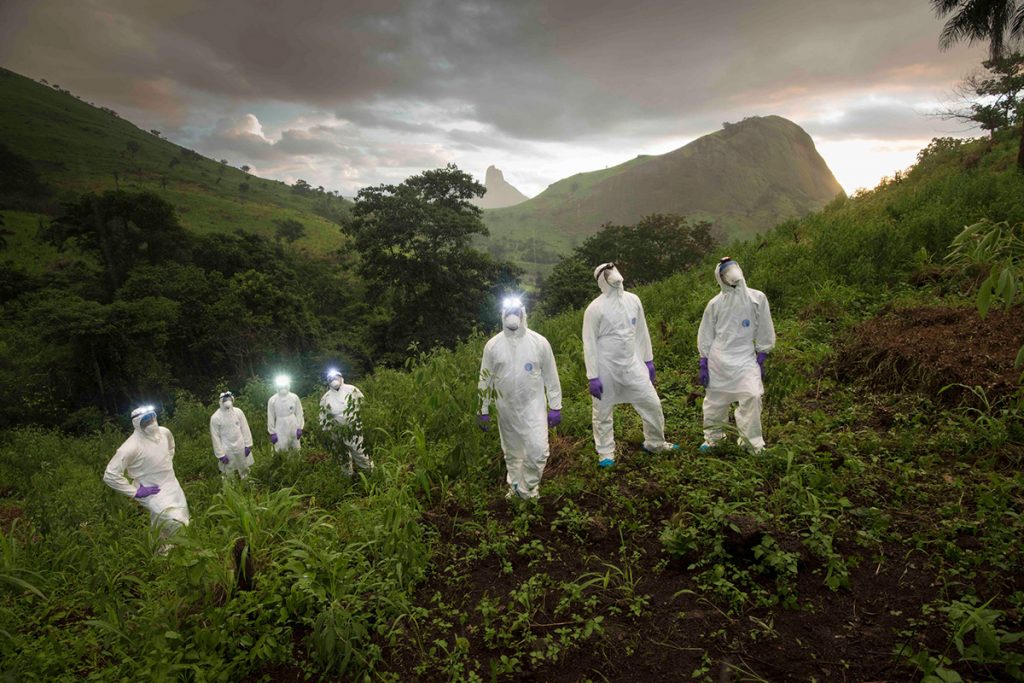
Over it’s ten-year run, the PREDICT project amassed one of the most comprehensive databases of human and animal viruses across the globe. The project officially came to an end last month. However, given the recent outbreak, USAID has extended the project’s funding for six months to provide emergency support, including technical support for early detection of SARS CoV-2.
Many human pathogens originate in animals
Of all the known pathogens that cause diseases in humans— so think viruses and bacteria— more than 60 percent of them originated in animals, mostly from wildlife.
While the current COVID-19 pandemic may seem like it came out of nowhere, scientists have been concerned for years about viruses in bats, rodents and other wildlife that could evolve to infect humans.
“So we think spillover is happening far more commonly than is recognized,” she says.
Spillover means when an animal virus evolves to be able to infect humans. Yet the real risk comes if the virus not only infects humans, but can be transmitted from human to human.
“USAID really wanted to push the paradigm towards early recognition of those events instead of waiting for big, big pandemics where we have human-to-human transmission that is already out of control,” says Kreuder Johnson.
To do this, the project has sampled viruses from over 150,000 animals and people around the globe. PREDICT scientists have trained research teams in over 30 countries, mostly in Asia and Africa. The teams identify areas where humans and animals interact, such as bat guano farmers or areas recently deforested for agriculture or poor urban areas where people live with their domestic animals and other rodents. The researchers then take sample viruses from both animals and human bodies.
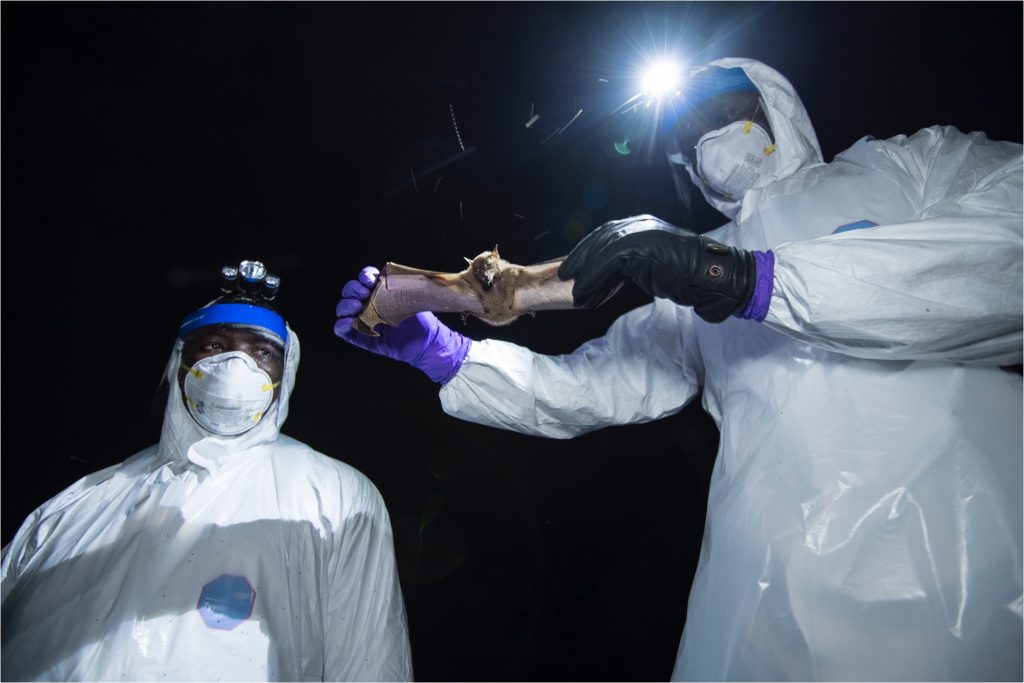
They then screen each virus to see which family it comes from, and evaluate if it’s a novel virus that looks like it could be risky to humans.
Since its inception in 2009, PREDICT has discovered a new kind of Ebola virus and various MERS- and SARS-like viruses.
This global survey of viruses’ genetics isn’t universally supported. Some researchers have critiqued the approach saying there are too many factors that influence whether a virus jumps its host species and spills over into humans. In 2018, several biologists wrote an op-ed in Nature, saying rather than focusing on studying all viruses in human-wildlife interface areas, research dollars should instead focus on real-time surveillance of human populations for outbreaks.
Testing if novel viruses can infect humans
Not all new viruses show risk of infecting humans.
To identify viruses, typically researchers start by looking at specific markers in the genome, areas they know will tell them about the virus and what family it comes from.
And if they find a new virus that seems like it has potential to be dangerous— say, it’s similar to SARS or MERS in the group of coronaviruses— then they test it further.
“Then we want to sequence a genome and then from there you can start to look at things like, ‘Can it use the same receptor and get into human cells?’ ” says Tracy Goldstein, a microbiologist and pathologist at UC-Davis and co-director of the PREDICT project.
One such receptor they look for on a virus is what are called “spike” proteins— they’ve made the news during this outbreak of SARS-CoV-2, the virus that causes the COVID-19 illness.
These spiky proteins protruding out from the virus are what allows it to fuse with human cell membranes and inject its genetic material into the cell.
The researchers not only look for certain receptors, but Goldstein says, “You can actually do experiments in the lab as well where you can test if, can this virus infect human cells and bat cells and dog cells.”

One big unknown: how quickly do these viruses evolve?
That’s all lab work with cells in petri dishes— no testing on human subjects— that helps the researcher learn if the virus can use human cells to multiply. Viruses can’t replicate on their own; they need an animal host whose cells they hijack and force to replicate their own viral DNA. (Because of this, many scientists don’t consider viruses to be “alive, but there is debate over the question.)
One of the big unknowns about these zoonotic viruses, including SARS-CoV-2 which causes COVID-19, is just how quickly are they adapting? How long does it take to mutate from something that lives in bats to something that can infect humans? How quickly then might it evolve to be transmitted between humans?
Biologist Dibesh Karmacharya works for the PREDICT project in Nepal. He has collected viruses in temporary settlements on the outskirts of Kathmandu where people live in close quarters with domestic animals like ducks as well as rodents.
“So if we do a whole genome sequencing of these Coronaviruses that we found on rats and ducks and humans, we will be able to compare what are the little changes, if there are any, between the coronaviruses that we found in these two different species.”
Analyzing those minute genetic differences “should really shed some light in terms of how the spillover happens,” says Karmacharya. His lab is applying this same kind of analysis to the SARS-COv-2 virus. They have samples of the virus from sick patients in Nepal and hope to learn if and how quickly the virus has changed from its source in Wuhan, China.

Stopping the next Ebola
One thing the PREDICT data has shown is that more than 90 percent of the viruses are found in bats.
“So I think on a broad scale, what that tells us is that our bats are probably likely the original, or evolutionary host of these things.”
Several years ago, Goldstein’s team discovered a previously unknown Ebola virus living in bats in Sierra Leone. It’s called the Bombali ebolavirus, and lab tests show the virus has the receptors to infect humans, though it’s unclear if it would cause disease.
To reduce any risk of the virus infecting humans and adapting into something more dangerous, Goldstein says they developed a community education program called “Living Safely with Bats.” The gist of it was to educate folks to keep their children and their living spaces further away from their bat roosts and to wear gloves when harvesting guano for fertilizer– all to reduce human exposure.
It’s also important to educate people that killing wildlife isn’t the answer: “If you start to exterminate certain wildlife species, you actually can bring about higher rates of the disease transmission and potential for spillover,” says Kreuder Johson.
It’s not entirely clear why we’re seeing more emerging diseases from wildlife threaten humans. But many scientists suggest that part of the reason could be the way humans are encroaching on wildlife habitat– and changing it.
“With the growing human population, we are getting into places where we’re not supposed to be, and we are going to come in contact with certain things that are going to create problems,” says Karmacharya.
Karmacharya and Goldstein says deforestation and human expansion into wildlife habitat are some ways that humans get exposure to wildlife viruses. Similarly, some of our farming practices and meat markets that bring wild animals and domestic animals together in close quarters are causes for concern.
